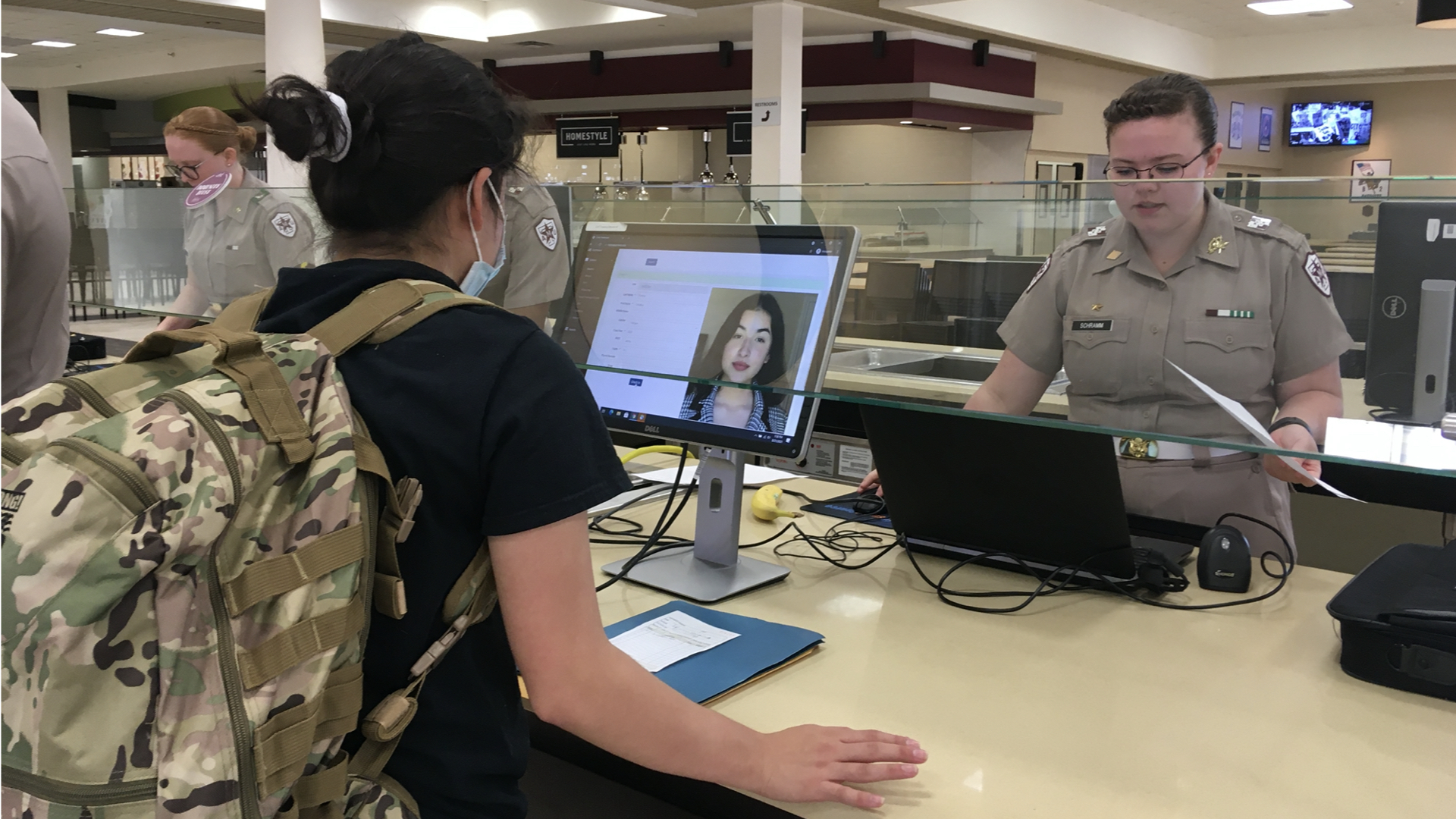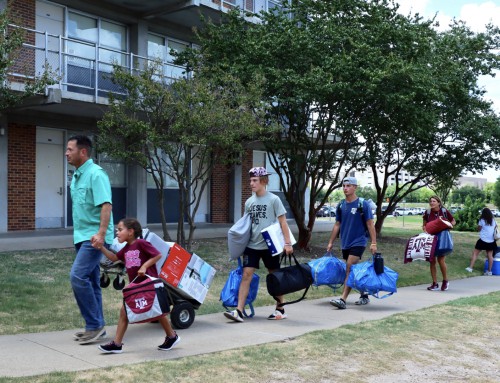
When cadets first arrived on campus in October 1876, the intake process was simple. They registered as students on their first class day. All students were required to participate in the Corps of Cadets.
The day the doors first opened at the A&M College of Texas, only six students registered, so the start of classes was delayed by two days until 40 students had registered. There was no orientation. The objective was to get students in the door. Accuracy of records was apparently not a priority. The first student to enroll was listed as “James Archibald McIver.” By the second year school records correctly showed his first name as “John.”
In the 145 years since, that process has become more robust for all students entering the Corps of Cadets. The nearly 700 students who have voluntarily chosen to participate this fall as freshmen in the Corps have an entire week before the first class day for orientation as new cadets.
The purpose of Freshman Orientation Week (FOW) is to introduce new “fish” to the basics of Corps lifestyle and operations as well as to prepare them for the academic year. This program begins with a check-in process that takes each new cadet through such steps as verifying they have completed a medical screening, informing them of awarded scholarships, issuing their student ID and uniform, and providing a key to their on-campus residence.
Every year the check-in process gets refined. This year for the first time members of the Aggie Band checked in a few days earlier than other cadets to allow time to prepare for their half-time performance in Texas A&M’s football season opener on September 4. The band’s intake was held for the first time in the new Music Activities Center, which necessitated a different station sequence due to its distance from the Corps’ Uniform Distribution Center. Minutes before the doors opened to let in new band members, an unattended check-in station needed to be removed from the sequence. Three days later the custom check-in tool again needed to be reconfigured for a different intake sequence held in Duncan Dining Hall. Fortunately, from years of experience supporting FOW check-in, Technology Services – Student Affairs had redesigned the tool to be easily reconfigurable to reliably support such last-minute changes.
For eight years Technology Services – Student Affairs has been a strategic partner for FOW. Each year Technology Services – Student Affairs developers are on site during the check-in process to provide immediate technical support as needed, to fully understand the business needs, and to help identify ways to further leverage technology to refine the process. Each year they participate in the Corps’ after-action review.
This year is the first for Frank Wood, a cadet training officer in the Office of the Commandant, to oversee the FOW intake process. He appreciates DoIT’s attention to getting the details right and helping the process flow smoothly. “On the surface the intake process may appear simple, but it has a lot of moving pieces.” Most steps in the process involve a simple barcode scan to reference information drawn from other sources such as recruiting information in the Slate admissions management system, medical clearance handled by Student Health Services, and scholarship information from the SPARTA system. The process concludes with adding freshmen as active cadets in the main cadet management system.
In the Corps, cadets will learn discipline, how to follow instructions, and how to lead others. A cadet’s first day in the Corps can sometimes reveal the need to develop these capabilities. As a safeguard, the check-in tool not only directs a cadet each step of the way, but also identifies when a cadet has gotten out of step. A few years ago, a cadet was instructed to advance from the “medical” station to “academics”, a table about 15 feet away, where academic waivers were to be signed. A special report in the FOW tool flagged the cadet as “lost” when the cadet failed to report to that next station within 20 minutes. That prompted cadets in his unit to try to locate him. He was eventually found. The cadet had misinterpreted the instructions given. Instead of going to the adjacent table marked “academics,” he left the check-in venue to go to the Academic Building in the center of campus.
The FOW process was previously overseen by John Fleming, assistant commandant for operations and training. For him the ability to get real-time status information of how many people have arrived and checked in is critical. “The capability of walking back over to my office and having that information available right away enables us to immediately figure out ‘Did we start orienting everyone to the university?’ without having to pause on everyone.” By way of contrast, he recalls the stacks of paper at every station when he began FOW years earlier as a freshman cadet.
The efficiency achieved from process improvement and a well-aligned tool is raising the question of how much the check-in period can be shortened in the future. For Fleming, confidence to shorten the check-in duration is not just a result of good process and tools, but also of the consistent dependable relationship with Technology Services – Student Affairs staff year after year. “These are people we already have relationship with. It’s invaluable that we have these good working relationships.”
Before leaving Duncan Dining Hall, our developers had already generated and shared ideas and emerging capabilities that could further improve the process.
We want the Corps to be successful as it develops leaders. That starts with enabling a positive experience on a cadet’s first day.
The first step in the FOW intake process is to confirm the accuracy of each cadet’s name and contact information. If their first name is “John,” the records will correctly reflect that. Of course, within the Corps the freshman will think their first name is “Fish”.
Increasing value for our customers. That’s what we’re about. Ask how we can help you!
For more information about A&M’s very first student, read the Texas A&M Today article.




